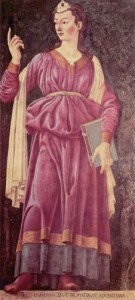Smoke and Mirrors of an Ancient Empire
An unsolved ancient mystery, a concealed entrance to the underworld, and an entranced “sibyl” with the power to influence an empire — these are the elements of an unforgettable history lesson…
The Unsolved Mystery of the Tunnels at Baiae
Did ancient priests fool visitors to a sulfurous subterranean stream that they had crossed the River Styx and entered Hades?
By Mike Dash (smithsonian.com)
“There is nothing remotely Elysian about the Phlegræan Fields, which lie on the north shore of the Bay of Naples; nothing sylvan, nothing green. The Fields are part of the caldera of a volcano that is the twin of Mount Vesuvius, a few miles to the east, the destroyer of Pompeii. The volcano is still active–it last erupted in 1538, and once possessed a crater that measured eight miles across–but most of it is underwater now. The portion that is still accessible on land consists of a barren, rubble-strewn plateau. Fire bursts from the rocks in places, and clouds of sulfurous gas snake out of vents leading up from deep underground.
The Fields, in short, are hellish, and it is no surprise that in Greek and Roman myth they were associated with all manner of strange tales. Most interesting, perhaps, is the legend of the Cumæan sibyl, who took her name from the nearby town of Cumæ, a Greek colony dating to about 500 B.C.– a time when the Etruscans still held sway much of central Italy and Rome was nothing but a city-state ruled over by a line of tyrannical kings.
The sibyl, so the story goes, was a woman named Amalthaea who lurked in a cave on the Phlegræan Fields. She had once been young and beautiful–beautiful enough to attract the attentions of the sun god, Apollo, who offered her one wish in exchange for her virginity. Pointing to a heap of dust, Amalthaea asked for a year of life for each particle in the pile, but (as is usually the way in such old tales) failed to allow for the vindictiveness of the gods. Ovid, in Metamorphoses, has her lament that “like a fool, I did not ask that all those years should come with ageless youth, as well.” Instead, she aged but could not die. Virgil depicts her scribbling the future on oak leaves that lay scattered about the entrance to her cave, and states that the cave itself concealed an entrance to the underworld…”
Read more here.
Share

